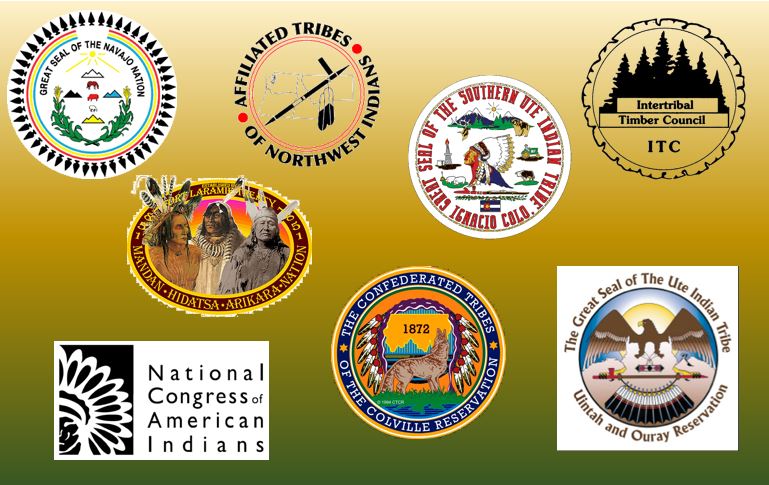This legislation contains important permitting and Judicial review provisions for tribes and Alaska Native Corporations that work to eliminate attacks by outside special interest groups. Overall, this bill is based on the principle that Native communities, not the federal government or special interests, are the best stewards of Native lands.
by Marjorie Haun
Since at least 2015, the Native American Energy Act (HR 210) has been hampered by congressional inaction, largely due to a veto threat from Obama. But on October 4, with that threat no longer looming, the bill was approved by the Committee on Natural Resources, and appears to have significant support in the House of Representatives. Introduced by Alaska Representative, Don Young, the bill is crafted to give Native American tribes relief from federal over-regulation which has prevented the development of energy, from biomass to fossil fuels, on their own lands.
In the markup memorandum of the Native American Energy Act, some background is given about why this act is so necessary and so timely. It states:
Tribes and individual Indian landowners regularly encounter obstacles not encountered on leases of private and state lands. In general, federal law requires the approval of the Interior Department before a lease entered into by a tribe with an energy developer is valid. For example, Under the Indian Land Mineral Leasing Act of 1982, a tribe or individual Indian may only lease their trust lands for mineral development “subject to the approval of the Secretary.” Pursuant to this authority, the Department developed sprawling rules for the approval of leases of Indian lands. The rules often trigger National Environmental Policy Act (“NEPA”) reviews, lengthy appraisals, expensive applications for permits to drill, and numerous other layers of dilatory bureaucratic review often involving multiple agencies. Each layer of review gives a federal or private special interest an opportunity to meddle, interfere, delay, appeal, or sue to slow or stop permitting of development on Indian lands.
The current federal regulatory scheme obstructs historically impoverished tribes from fully realizing the huge economic potential of developing their natural resources. Because tribes with large energy resources tend to be located in rural areas, development of these resources offers one of the few non-government means available for them to create jobs and a revenue stream to meet member demands for tribal services or activities, investment in the local community, and new energy supply to meet consumer demand.

It’s clear that alleviating persistent tribal poverty is one aim of the Act, and it opens the door to private sector, free-market solutions to the joblessness and government dependence common to many Indian reservations. Representative Young, apparently inspired by Native American-owned corporations in Alaska which have been impeded by green lawsuits and onerous federal regulations, summarized the bill this way:
“The Native American Energy Act is critically important to Alaska Natives and American Indians because it levels the playing field for responsible resource development, an essential step towards self-determination. The bill contains a number of policy improvements to reduce the hurdles and obstacles for energy and resource development imposed by the federal government, while empowering Native communities to better manage and develop their lands. This legislation contains important permitting and Judicial review provisions for tribes and Alaska Native Corporations that work to eliminate attacks by outside special interest groups. Overall, this bill is based on the principle that Native communities, not the federal government or special interests, are the best stewards of Native lands. I’m encouraged by the strong support my legislation has received from tribes and Native organizations throughout the country and thank Chairman Bishop for making this issue a top priority.”
The reforms listed in the Native American Energy Act include:
•Appraisal reforms giving tribes more options, and streamlining in transactions involving Indian land or trust assets belonging to a tribe.
•Standardizing oversight, review, and approval processes across all Department of Interior, and other federal agencies, involved in tribal applications for oil and gas activities.
•Limiting Environmental Review commentary related to energy development activities only to authorized tribal bodies, tribal members, local governments, and others living within the affected area, minimizing the influence from outside special interest groups.
•Setting a 60 day time limit for complaints to be filed during a period of judicial review. Setting a 180 day time limit for District Court actions.
•Creating a ‘loser pays’ system for court actions in which a (special interest) plaintiff brings a lawsuit for an energy-related action, wherein the losing plaintiff will have to defendants’ legal fees.
•Allowing for Indian tribes’ biomass projects (biofuel, heating fuel, electricity generation) on Indian lands and in nearby communities, using biomass obtained from Federal land.
•Tribal management of forests, wherein tribes may contract perform administrative, management, and other functions of the Tribal Forest Protection Act (2004).
•Giving the federal definition of ‘sustainable management practice’ to resources harvested pursuant to a Tribal Management Plan.
•Increasing Navajo Nation leasing rights on restricted lands from ’25’ years to ’99’ years by amending the ‘Long-term Leasing Act.’
Rob Bishop (UT), Chairman of the Natural Resources Committee cited ‘the federal government’s culture of paternalism‘ as a key factor limiting Native American’s ability to develop energy resources on tribal lands. Although the Native American Energy Act is in the early phases of its journey through congress, if it survives the trip, there exists little threat of a veto from President Trump, whose central mission for federal land management is development of domestic energy resources.
[paypal_donation_button]
Free Range Report
[wp_ad_camp_3]
[wp_ad_camp_2]



